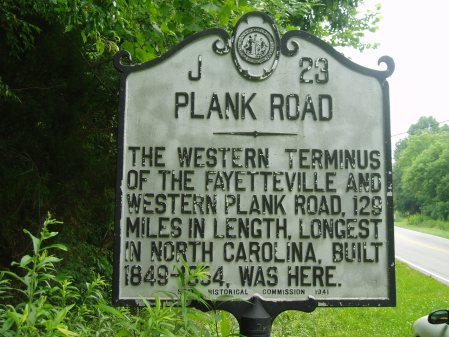On October 28, 1854, the Fayetteville and Western Plank Road was completed. Stretching nearly 150 miles west to Forsyth County, it was the longest plank road in the state.
Plank roads were wooden highways that were easier to navigate than rough, rutted and often muddy dirt roads. Tolls were collected along the route to pay for their maintenance.

The plank road movement began in North Carolina in the late 1840s in response to arguments from many that the state’s existing road system was the worst in the country. Enthusiasm for such projects grew and by 1860, nearly 500 miles of plank road had been laid in North Carolina.
Plank roads failed to flourish for a variety of reasons. First, building these roads was slow and difficult work. One crew could be expected to lay about 40 miles in a year. Also, railroads were faster and the public cheated the toll system by avoiding tollbooths. The Civil War ultimately destroyed much of the infrastructure. Though decidedly a failure, the plank road movement was an important step by the state toward improving transportation infrastructure for economic growth.
Other related resources:
- The history of transportation from NCpedia
For more about North Carolina’s history, arts and culture, visit Cultural Resources online. To receive these updates automatically each day subscribe by email using the box on the right and follow us on Facebook, Twitter and Pinterest.

